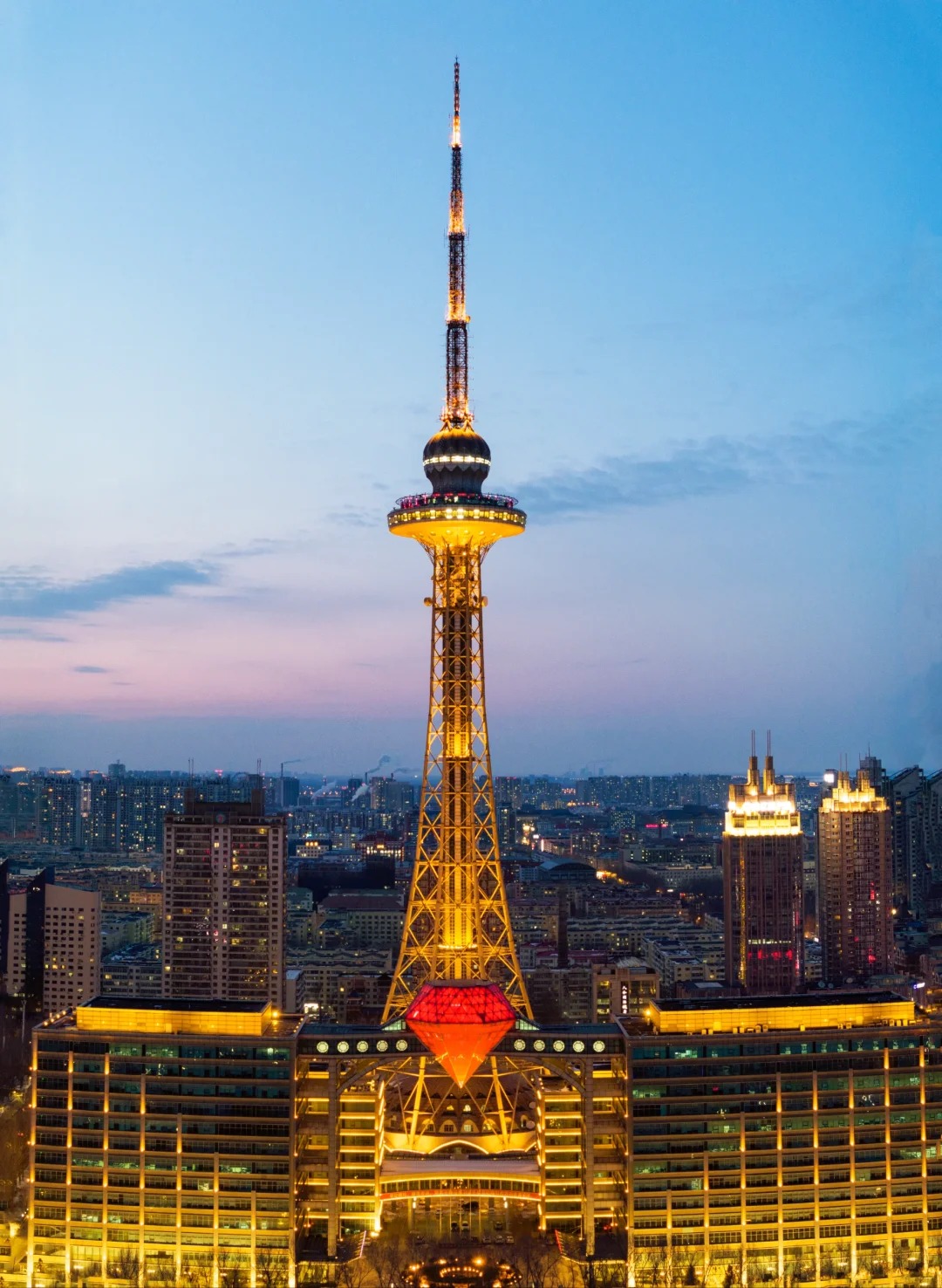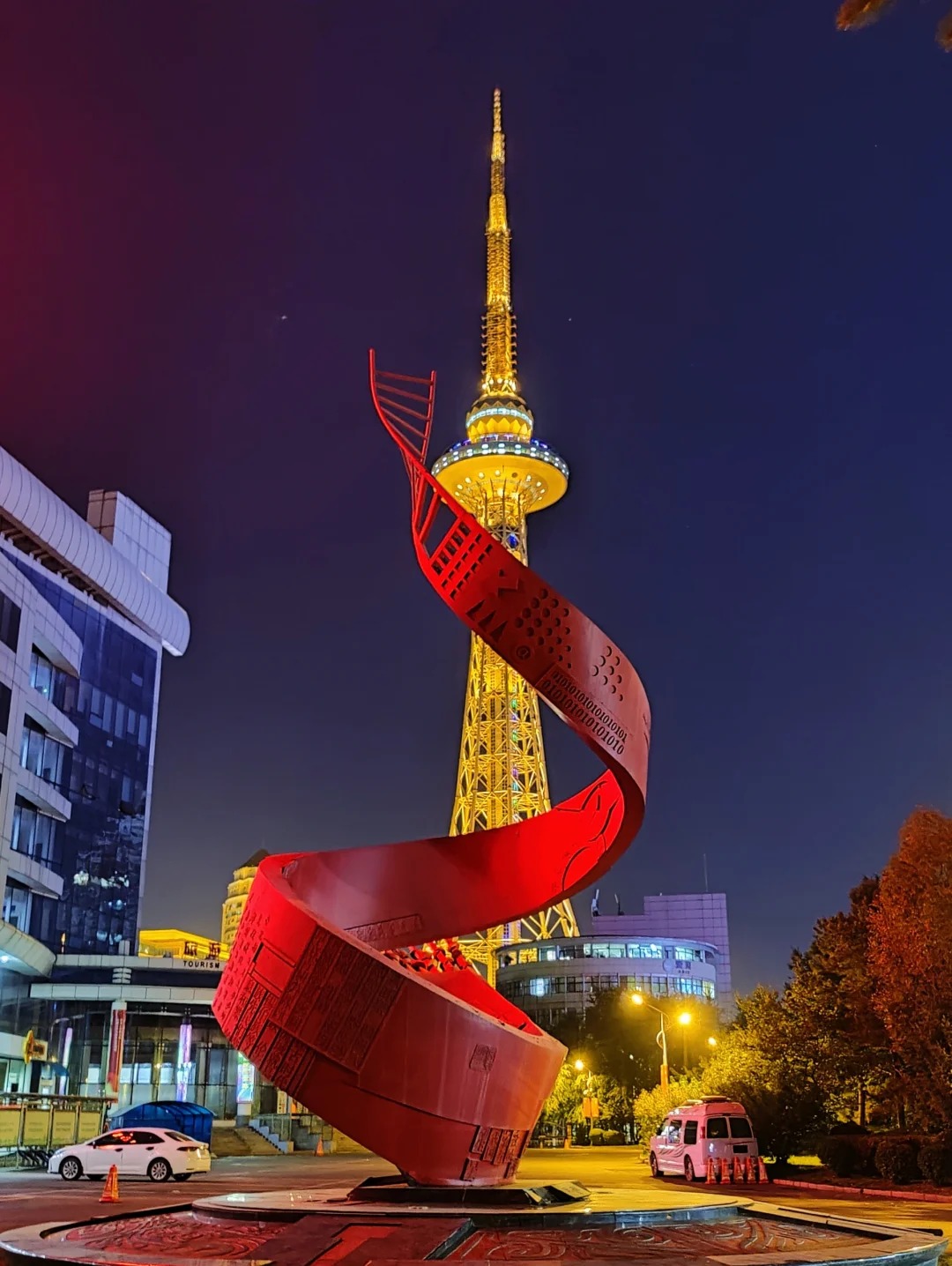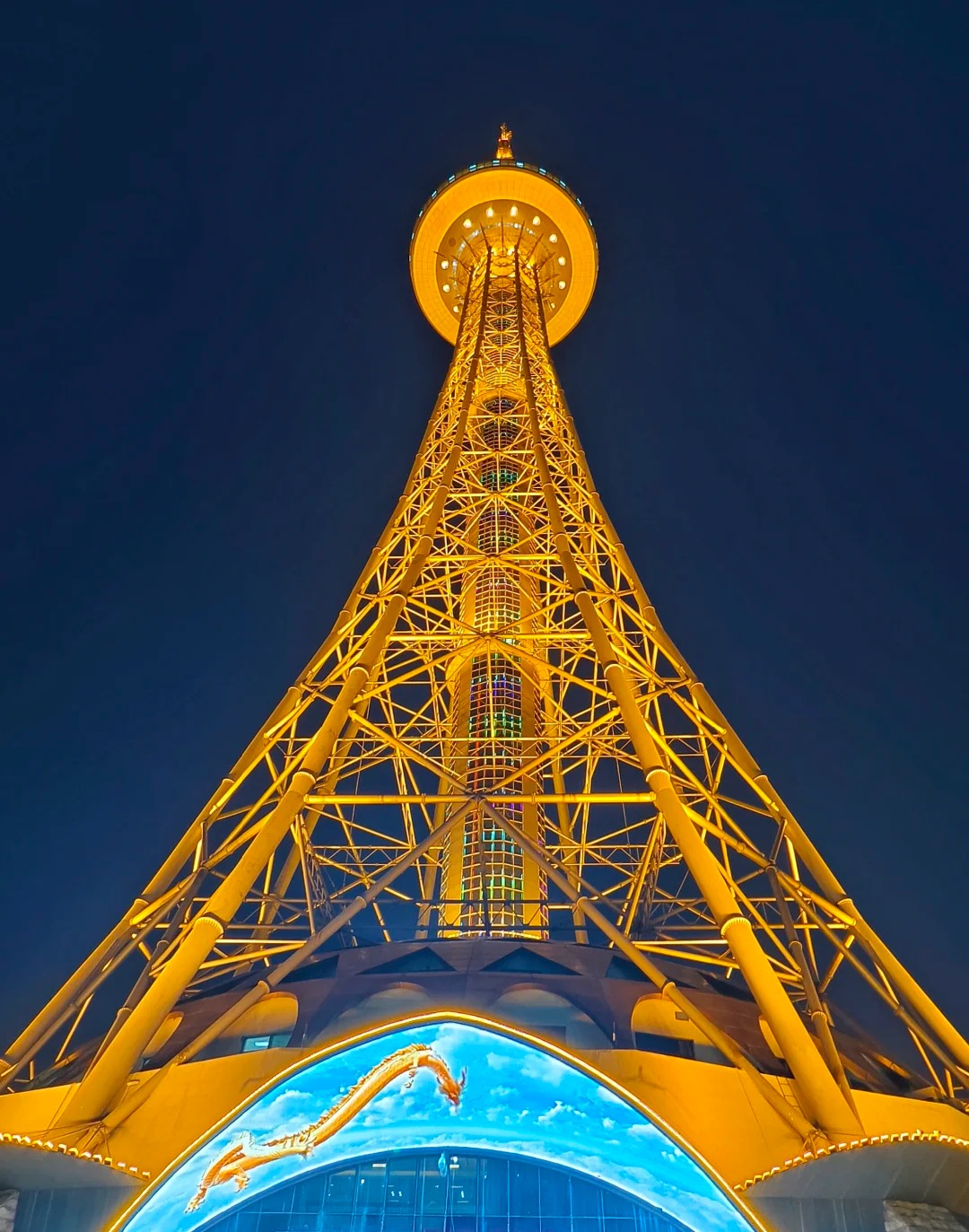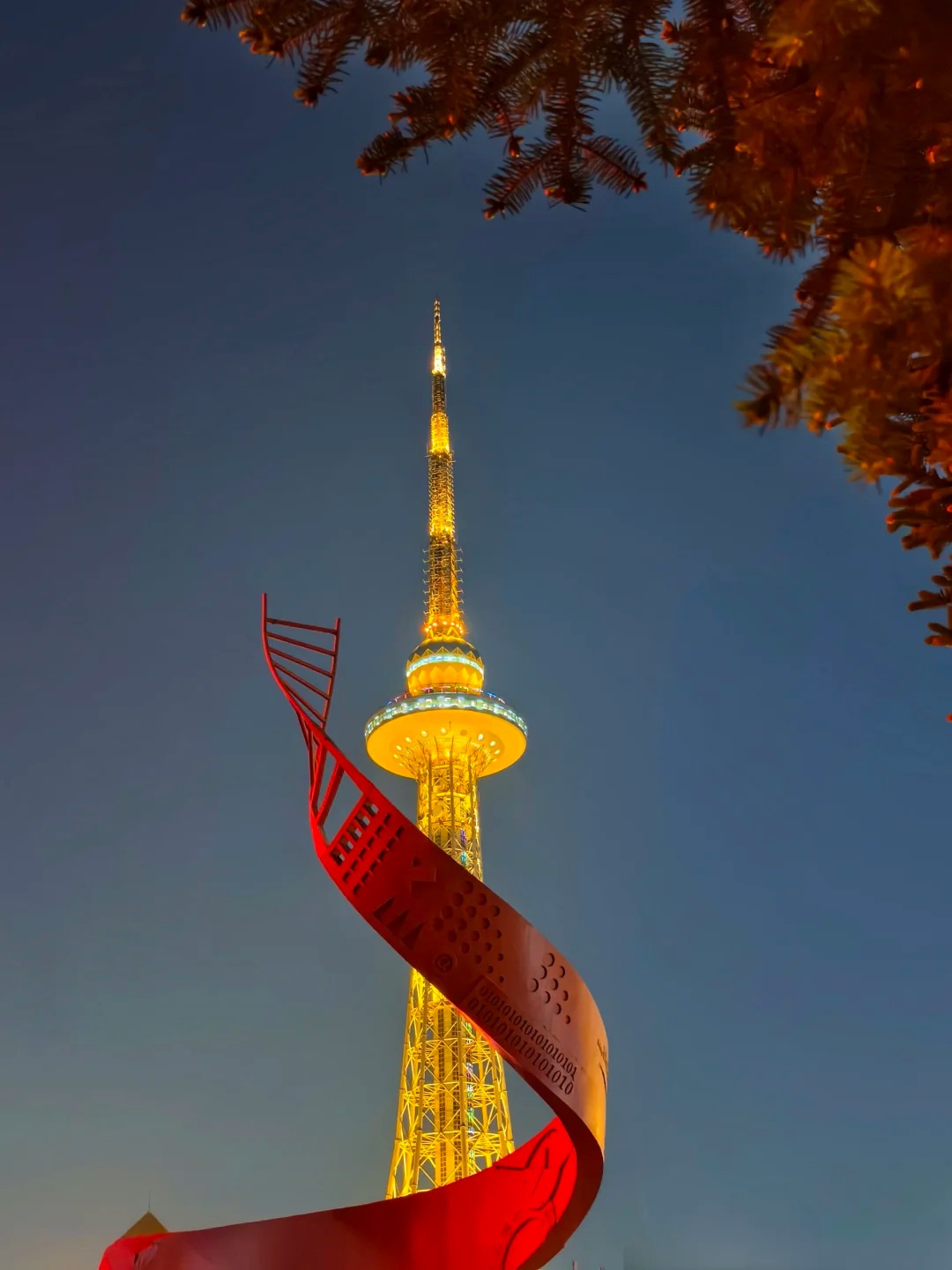Visiting Information
| Information | Details |
|---|---|
| Chinese Name | 龙塔 (Lóngtǎ) |
| Location and Address | 1 Longta Road, Shenhe District, Shenyang, Liaoning Province, China |
| Opening Hours | 9:00 AM – 9:30 PM daily |
| Entrance Fee | 70 CNY for adults, 35 CNY for children and seniors |
| How to Get There | By Metro: Line 2, get off at Longta Station By Bus: Take bus 148, 168, 213, 222, 256, 258, 265, 301 to Dragon Tower stop By Taxi: Easily accessible from anywhere in Shenyang city center |
| Best Time for Visit | April to October, especially during clear days for the best views |
| Contact Info | Tel: +86 24 2397 5555 Email: Not available |
Overview
Dragon Tower, also known as Shenyang TV Tower, is a prominent landmark in Shenyang, the capital city of Liaoning Province, China. Standing at 305.5 meters (1,002 feet) tall, it is the tallest tower in Northeast China and a symbol of Shenyang’s modernization. The tower serves multiple purposes, including television and radio transmission, sightseeing, and entertainment. Its unique design, inspired by ancient Chinese dragon motifs, makes it a distinctive feature of Shenyang’s skyline and a popular tourist attraction.
Historical Background
The Dragon Tower was constructed between 1989 and 2000, marking a significant period in Shenyang’s urban development. Its construction coincided with China’s rapid economic growth and modernization in the late 20th century. The tower was designed to symbolize the city’s ambition and progress while paying homage to traditional Chinese culture through its dragon-inspired form. Since its completion, Dragon Tower has played a crucial role in Shenyang’s telecommunications infrastructure and has become an integral part of the city’s identity and tourism landscape.

Architectural Features
- Dragon-inspired Design: The tower’s most striking feature is its design inspired by the Chinese dragon. The main body of the tower twists upward in a spiral form, resembling a dragon coiling around a pole. This unique architectural approach blends modern engineering with traditional Chinese symbolism, creating a structure that is both functional and culturally significant.
- Observation Decks: Dragon Tower features multiple observation decks at different heights, offering panoramic views of Shenyang. The highest observation deck is located at 280 meters, providing visitors with breathtaking 360-degree views of the city and surrounding areas. These platforms are equipped with high-powered telescopes and information displays about the city’s landmarks.
- Revolving Restaurant: At 220 meters high, the tower houses a revolving restaurant that completes a full rotation every 60 minutes. This unique dining experience allows guests to enjoy a meal while taking in the changing views of Shenyang’s cityscape, combining culinary delights with sightseeing.
- Telecommunications Facilities: The upper sections of the tower contain various antennas and broadcasting equipment, serving as a vital hub for television and radio transmission across Shenyang and surrounding regions. This integration of public broadcasting infrastructure with tourist facilities showcases the tower’s dual role in the city’s development.
Cultural Importance
Dragon Tower holds significant cultural importance for Shenyang and the broader region of Northeast China. It embodies the fusion of traditional Chinese symbolism with modern architectural prowess, representing the city’s respect for its cultural heritage while embracing progress and innovation. The dragon motif, a powerful symbol in Chinese culture representing strength, prosperity, and good fortune, gives the tower a deep cultural resonance. As a landmark, it has become a source of pride for local residents and a symbol of Shenyang’s identity on the national stage. The tower also serves as a cultural center, hosting various exhibitions and events that showcase local art, history, and traditions, further cementing its role in preserving and promoting the cultural heritage of Shenyang and Liaoning Province.
Surrounding Attractions
- Hunhe River Park: Located near the Dragon Tower, this riverside park offers beautiful landscaping, walking paths, and recreational areas. It’s an ideal spot for a leisurely stroll or picnic, providing a green oasis within the urban environment and complementing the Tower’s modern architecture with natural beauty.
- Liaoning Provincial Museum: A short distance from Dragon Tower, this museum houses an extensive collection of historical artifacts, including prehistoric relics, ancient Chinese art, and items from the region’s imperial past. It offers visitors a deep dive into the rich history and culture of Liaoning Province and Northeast China.
- Shenyang Imperial Palace: Although not in the immediate vicinity of Dragon Tower, this UNESCO World Heritage site is a must-visit attraction in Shenyang. As the former imperial palace of the early Qing Dynasty, it provides a stark contrast to the modern Dragon Tower, showcasing the city’s long and varied history.
- Zhongshan Square: This historic square in the heart of Shenyang is surrounded by buildings from the early 20th century, reflecting the city’s colonial past. It offers a different perspective on Shenyang’s architectural heritage and urban planning, contrasting with the modernity of Dragon Tower.

Photography Opportunities
- Cityscape Views: The observation decks of Dragon Tower offer unparalleled opportunities for cityscape photography. Photographers can capture stunning panoramic views of Shenyang, showcasing the city’s mix of modern skyscrapers, historical buildings, and natural landscapes. The changing light throughout the day provides diverse moods for cityscapes, from misty mornings to golden sunsets.
- Architectural Details: The unique dragon-inspired design of the tower itself presents fascinating subjects for architectural photography. Close-up shots of the tower’s twisting structure, especially during different lighting conditions, can yield striking abstract images that highlight the blend of traditional symbolism and modern engineering.
- Night Photography: After dark, Dragon Tower is illuminated with colorful lights, creating a spectacular display. Night photography enthusiasts can capture the tower as a glowing beacon in Shenyang’s night skyline. Long-exposure shots from nearby vantage points can produce dramatic images combining the illuminated tower with light trails from city traffic.
- Seasonal Variations: The area around Dragon Tower and the views from its observation decks change dramatically with the seasons. From spring blossoms to autumn foliage and winter snow, each season offers unique photographic opportunities that showcase both the tower and the changing face of Shenyang throughout the year.
Modern Importance
- Telecommunications Hub: Dragon Tower plays a crucial role in Shenyang’s telecommunications infrastructure. It serves as a primary transmission point for television and radio signals, ensuring broad coverage across the city and surrounding areas. This function underscores the tower’s importance in keeping Shenyang connected and informed in the digital age.
- Tourism and Economic Impact: As one of Shenyang’s most recognizable landmarks, Dragon Tower significantly contributes to the city’s tourism industry. It attracts both domestic and international visitors, boosting local businesses such as hotels, restaurants, and shops. The tower’s role in tourism helps diversify Shenyang’s economy and enhances its reputation as a modern, visitor-friendly city.
- Urban Identity and Branding: Dragon Tower has become an integral part of Shenyang’s urban identity and cityscape. Its distinctive silhouette is often used in city branding and promotional materials, serving as a visual shorthand for Shenyang’s blend of tradition and modernity. This iconic status helps in marketing the city for business, investment, and tourism purposes.
- Educational Resource: The tower serves as an educational resource, offering visitors insights into telecommunications technology, urban planning, and architectural engineering. Its observation decks and exhibits provide a unique platform for learning about Shenyang’s geography, history, and development, making it a valuable asset for public education and awareness.

FAQ
- What is Dragon Tower famous for?
Dragon Tower is famous for being the tallest tower in Northeast China, its unique dragon-inspired design, panoramic views of Shenyang, and its role as a telecommunications hub and tourist attraction. - What’s inside Dragon Tower?
Inside Dragon Tower, visitors can find multiple observation decks, a revolving restaurant, telecommunications equipment, and various exhibits about the tower and Shenyang’s history and development. - Is Dragon Tower free?
No, Dragon Tower is not free. There is an entrance fee of 70 CNY for adults and 35 CNY for children and seniors. - Is Dragon Tower worth visiting?
Yes, Dragon Tower is worth visiting for its stunning views of Shenyang, unique architecture, and cultural significance. It offers a comprehensive experience of modern Shenyang and its surrounding landscape. - What to do in Dragon Tower?
In Dragon Tower, you can enjoy panoramic views from the observation decks, dine at the revolving restaurant, learn about Shenyang’s history and development through exhibits, and take photographs of the cityscape. - How do I get to Dragon Tower in the local city?
In Shenyang, you can reach Dragon Tower by taking Metro Line 2 to Longta Station, or by bus (routes 148, 168, 213, 222, 256, 258, 265, 301) to the Dragon Tower stop. It’s also easily accessible by taxi from anywhere in the city center. - How to visit Dragon Tower?
To visit Dragon Tower, go during opening hours (9:00 AM – 9:30 PM), purchase a ticket at the entrance, and allow about 2-3 hours for your visit. Start with the observation decks for city views, explore the exhibits, and consider dining at the revolving restaurant. For the best experience, try to visit on a clear day, and consider timing your visit to catch the sunset or night views of the city.



